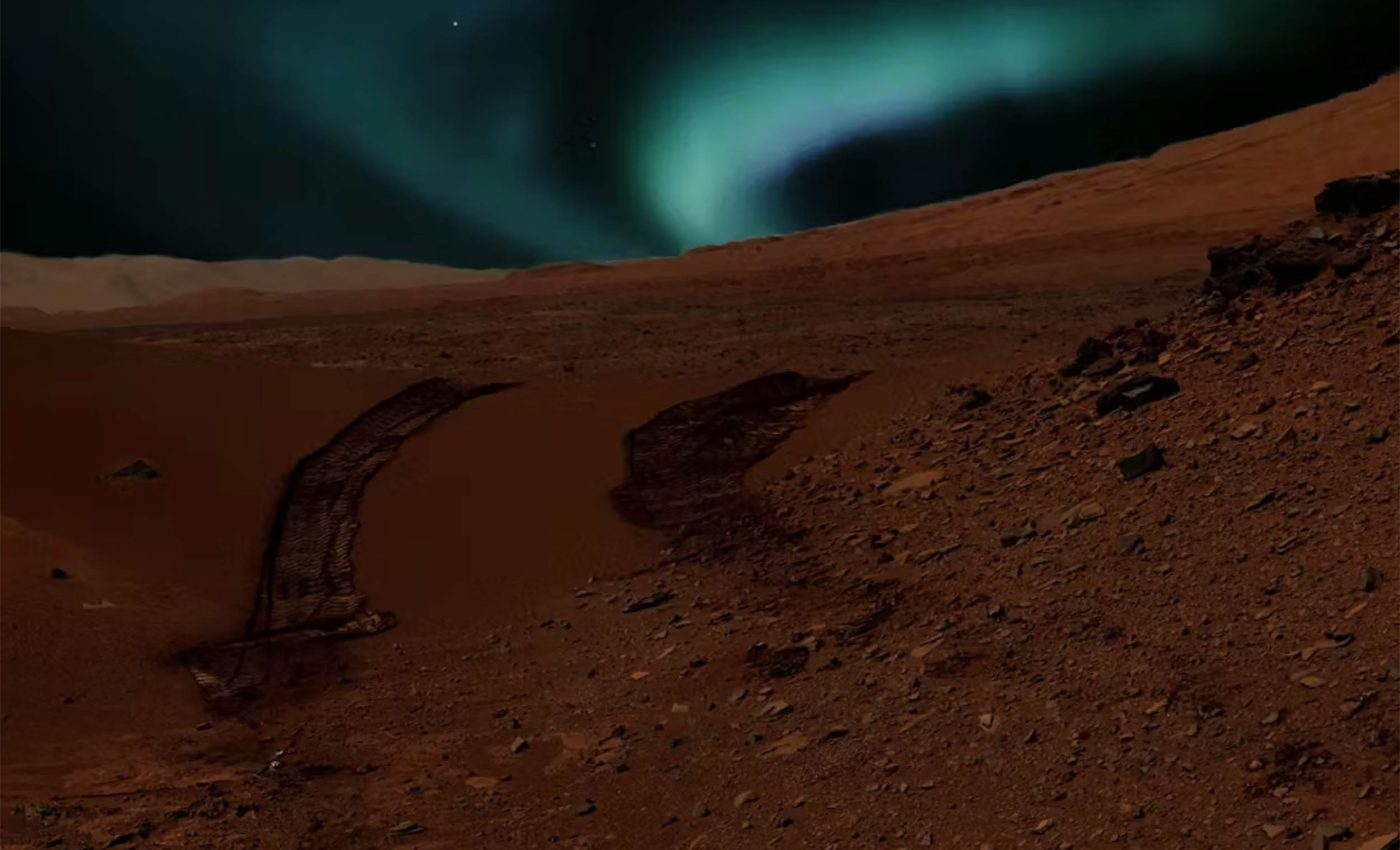
First visible-light auroras seen on Mars, captured by the Perseverance rover
A rare space weather alignment has allowed NASA’s Perseverance rover to photograph a glowing veil of green light rippling above Jezero Crater on Mars.
The display – captured on March 22, 2024, just days after a powerful solar eruption struck Mars – marks the first time an aurora has been documented from the surface of another world.
For scientists, the images confirm long-held predictions about Martian auroras and hint at a spectacle that could one day rival Earth’s northern lights.
A flash of opportunity
The story began a week earlier, on March 15, when the Sun unleashed an X-class flare and an accompanying coronal mass ejection (CME).
Racing outward at millions of kilometers per hour, the plasma cloud carried a swarm of solar energetic particles (SEPs).
On Earth, similar storms often kindle polar auroras by funneling charged particles into our global magnetic field. Mars lacks such a blanket field, so its entire nightside atmosphere can glow during major events.
The science team behind Perseverance wanted to know whether that glow from the Mars aurora could be seen in the visible spectrum.
MAVEN joins the search
Ultraviolet cameras on NASA’s MAVEN orbiter had already shown that SEPs create large, diffuse auroras high above the planet.
Some models predicted the most intense SEP storms might also stimulate oxygen atoms to emit green light at 557.7 nanometers – the same wavelength that colors many of Earth’s auroras.

To catch that signal, engineers trained two rover instruments: the Mastcam-Z imager and the SuperCam spectrometer.
“This exciting discovery opens up new possibilities for auroral research and confirms that auroras could be visible to future astronauts on Mars’s surface,” said Elise Knutsen, a postdoctoral researcher at the University of Oslo and lead author of the study.
Picking the perfect storm
Selecting the right storm required expert forecasting. Space weather specialists at NASA’s Moon to Mars Space Weather Analysis Office monitor solar flares and feed them into computer models at the Community Coordinated Modeling Center (CCMC).
When those models predict an interplanetary shock will sweep past Mars, an alert goes out to missions in orbit and on the surface.
“The trick was to pick a good CME – one that would accelerate and inject many charged particles into Mars’s atmosphere,” Knutsen said.
An alert for the March 15 event landed on the desk of Christina Lee at the University of California, Berkeley. Acting as MAVEN’s space-weather lead, she broadcast a Mars Space Weather Alert Notification to all active spacecraft.
“This allows the science teams of Perseverance and MAVEN to anticipate impacts of interplanetary CMEs and the associated SEPs,” noted Lee.
When brightness estimates came in from the models, Knutsen and her colleagues realized they had a rare chance.
“When we saw the strength of this one,” Knutsen said, “we estimated it could trigger aurora bright enough for our instruments to detect.”
Capturing an aurora on Mars
Two days after the CME slammed into Mars, Perseverance trained its cameras on the darkened sky.
SuperCam’s spectrometer registered a crisp spike at 557.7 nm – exactly the wavelength of Earth’s green auroras – while Mastcam-Z captured faint emerald curtains sweeping overhead.
Data from MAVEN’s SEP detector and ESA’s Mars Express confirmed a torrent of high-energy particles at the same time, nailing the source of the light.

“This was a fantastic example of cross-mission coordination. We all worked together quickly to facilitate this observation and are thrilled to have finally gotten a sneak peek of what astronauts will be able to see there someday,” said Shannon Curry, principal investigator for MAVEN at the University of Colorado Boulder.
Why Mars glows differently
Earth’s shimmering ovals cluster around the magnetic poles because our field lines guide particles into narrow funnels. Mars, stripped of its global dynamo billions of years ago, hosts only patchy crustal fields.
During a large SEP storm, the charged particles slam directly into the upper atmosphere across broad regions, driving planet-wide emissions.
The new images show that even without a magnetic field, oxygen atoms in the thin Martian air can produce visible green light when pummeled by solar debris.
“Perseverance’s observations of the visible-light aurora confirm a new way to study these phenomena that’s complementary to what we can observe with our Mars orbiters,” said Katie Stack Morgan, acting project scientist for the rover.
Big advance for space weather
Long-term monitoring of Mars auroras will do more than satisfy scientific curiosity. SEPs pose a radiation hazard to electronics and to human tissue.
Being able to predict when a storm will drench the planet – and reading atmospheric glow as a proxy for particle intensity – could one day help settlers take shelter.
“A better understanding of auroras and the conditions around Mars that lead to their formation are especially important as we prepare to send human explorers there safely,” Morgan said.
As the Sun continues to climb toward its maximum in 2025, researchers expect more CMEs and, with them, more chances for night-sky fireworks.
Perseverance and MAVEN will remain watchful, ready to turn an interplanetary hazard into a window on space weather – and, perhaps, into an unforgettable sight for the first humans who step onto the Red Planet’s dusty plains.
The study is published in the journal Science Advances.
—–
Like what you read? Subscribe to our newsletter for engaging articles, exclusive content, and the latest updates.
Check us out on EarthSnap, a free app brought to you by Eric Ralls and Earth.com.
—–













